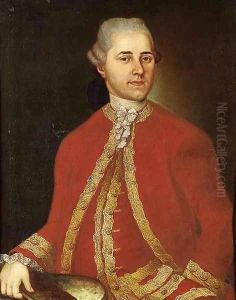Friedrich Wocher Paintings
Friedrich Wocher was a Swiss painter born in 1760, recognized for his contribution to panorama painting, a genre that gained popularity in the late 18th and early 19th centuries. His work is particularly notable for capturing expansive landscapes and cityscapes, offering viewers immersive experiences of the scenes depicted. Wocher's most celebrated piece is the earliest known surviving panorama of an actual place, specifically a 360-degree view of the city of Basel, Switzerland. This monumental work, completed in 1809, is considered a pioneering achievement in the field of panoramic art and stands as a testament to his innovative spirit and technical prowess.
Wocher's interest in art was evident from a young age, and he pursued his passion with dedication, honing his skills in various techniques. Despite facing the challenges common to artists of his time, including financial instability and the need for patronage, Wocher's talent and unique vision earned him recognition among his contemporaries. His approach to painting was detailed and methodical, capturing not just the physical beauty of landscapes and urban environments but also the atmosphere and mood of the places he depicted.
Throughout his career, Friedrich Wocher remained committed to exploring the possibilities of panorama painting, experimenting with different perspectives and scales to enhance the viewer's sense of immersion. His works were not only artistic achievements but also technical feats, involving careful planning, execution, and sometimes innovative framing methods to support the expansive canvases. Wocher's legacy in the art world is closely associated with the development of panoramic art, and his pioneering contributions continue to be studied and admired by art historians and enthusiasts alike.
Despite the recognition he received during his lifetime, Friedrich Wocher's name is not as widely known today as some of his contemporaries. However, his influence on the development of panoramic painting and his role in documenting the urban and natural landscapes of his time ensure his place in the history of art. Wocher passed away in 1830, leaving behind a body of work that continues to inspire admiration for its ambition, scope, and the unique window it offers into the past.
